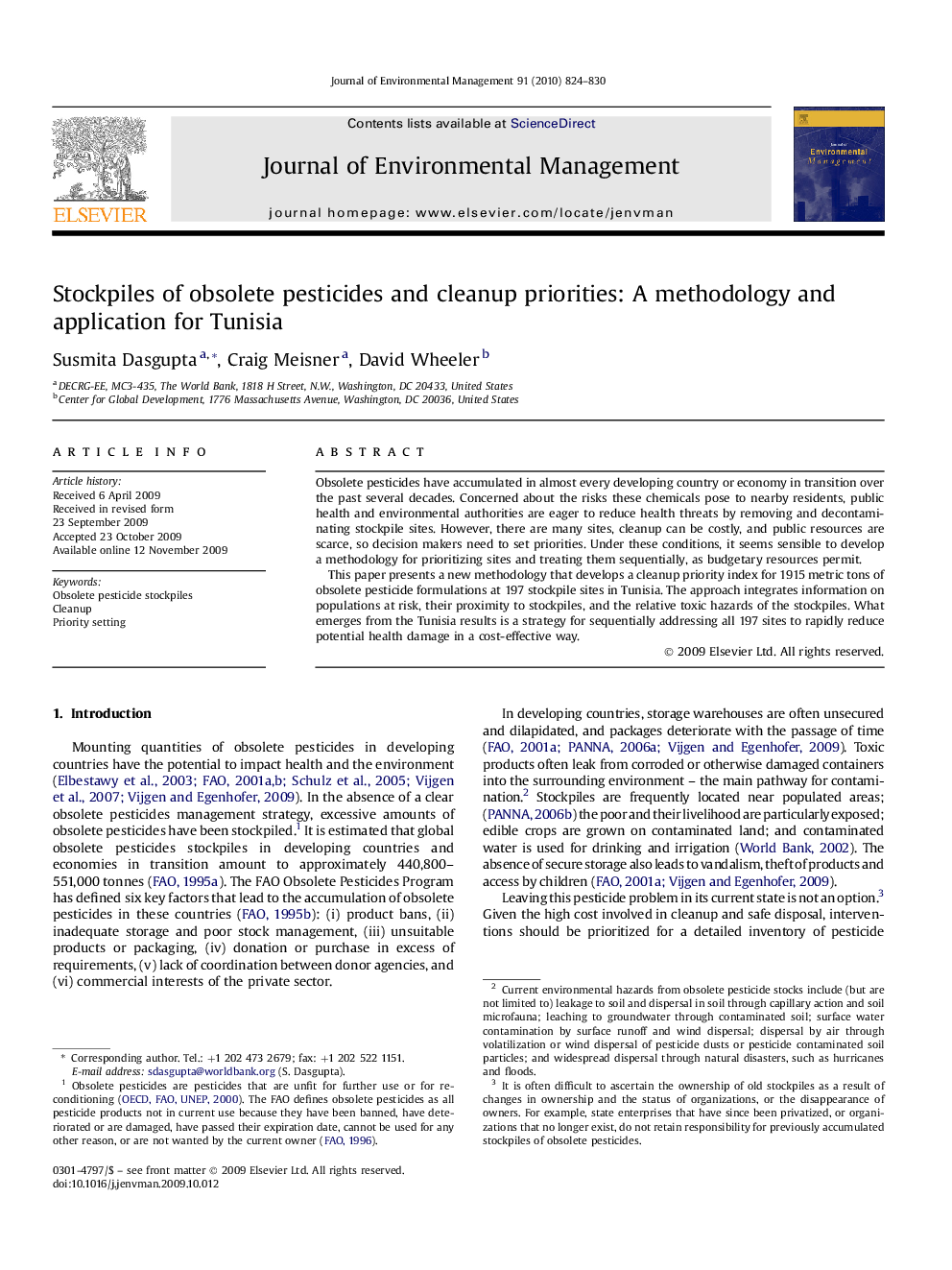| Article ID | Journal | Published Year | Pages | File Type |
|---|---|---|---|---|
| 1057673 | Journal of Environmental Management | 2010 | 7 Pages |
Obsolete pesticides have accumulated in almost every developing country or economy in transition over the past several decades. Concerned about the risks these chemicals pose to nearby residents, public health and environmental authorities are eager to reduce health threats by removing and decontaminating stockpile sites. However, there are many sites, cleanup can be costly, and public resources are scarce, so decision makers need to set priorities. Under these conditions, it seems sensible to develop a methodology for prioritizing sites and treating them sequentially, as budgetary resources permit.This paper presents a new methodology that develops a cleanup priority index for 1915 metric tons of obsolete pesticide formulations at 197 stockpile sites in Tunisia. The approach integrates information on populations at risk, their proximity to stockpiles, and the relative toxic hazards of the stockpiles. What emerges from the Tunisia results is a strategy for sequentially addressing all 197 sites to rapidly reduce potential health damage in a cost-effective way.
